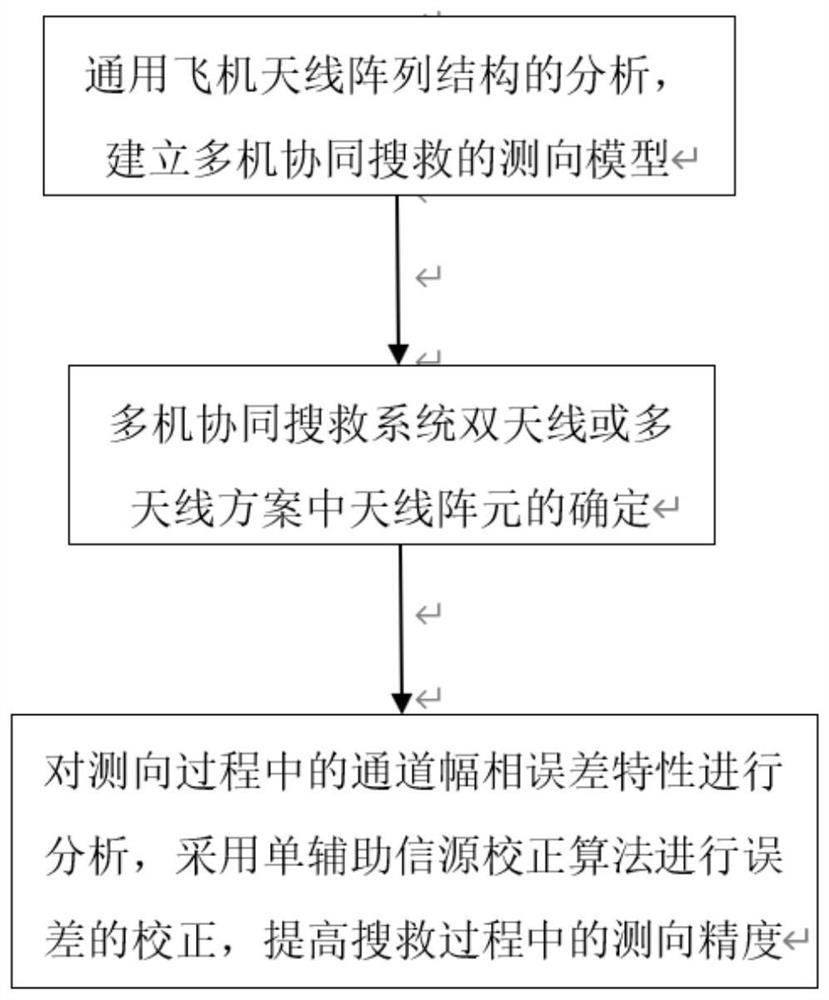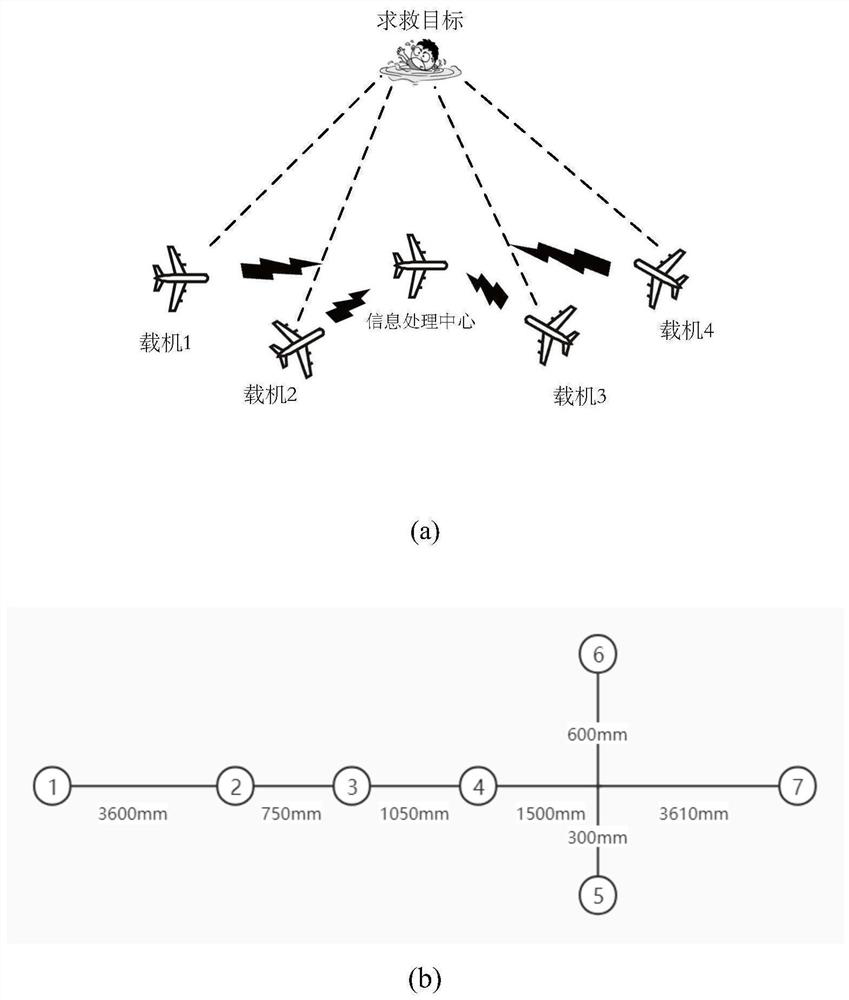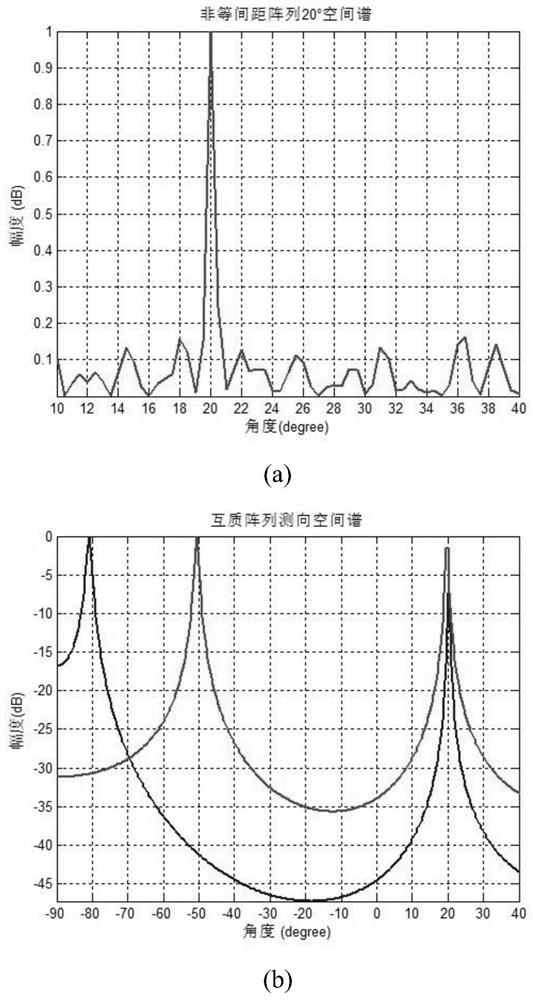High-precision spatial spectrum direction finding method based on specific non-equidistant array structure
A non-equidistant, array-structured technology, applied in the field of spatial spectrum direction finding, can solve problems such as incomplete observation information, vulnerability to communication interference, and poor search and rescue effects, and achieve improved target recognition capabilities, increased credibility, and improved Effects of detection performance and spatial resolution
- Summary
- Abstract
- Description
- Claims
- Application Information
AI Technical Summary
Problems solved by technology
Method used
Image
Examples
Embodiment Construction
[0059] The present invention will be further described below in conjunction with the accompanying drawings and embodiments.
[0060] The present invention first establishes a multi-aircraft cooperative search and rescue direction finding model for the specific array structure of general aircraft, and proposes two non-equidistant direction finding schemes for the non-equidistant antenna array structure, and then analyzes the channel amplitude and phase error characteristics in the direction finding process The analysis is carried out, and the single auxiliary source correction algorithm is used to correct the error, so as to improve the direction finding accuracy in the search and rescue process. like figure 1 As shown, the specific steps are as follows:
[0061] 1. Optimizing the design of the structure of the non-equidistant array can reduce the number of continuous elements of the antenna array and increase the aperture of the array, thereby improving the direction finding ...
PUM
 Login to View More
Login to View More Abstract
Description
Claims
Application Information
 Login to View More
Login to View More - R&D
- Intellectual Property
- Life Sciences
- Materials
- Tech Scout
- Unparalleled Data Quality
- Higher Quality Content
- 60% Fewer Hallucinations
Browse by: Latest US Patents, China's latest patents, Technical Efficacy Thesaurus, Application Domain, Technology Topic, Popular Technical Reports.
© 2025 PatSnap. All rights reserved.Legal|Privacy policy|Modern Slavery Act Transparency Statement|Sitemap|About US| Contact US: help@patsnap.com



